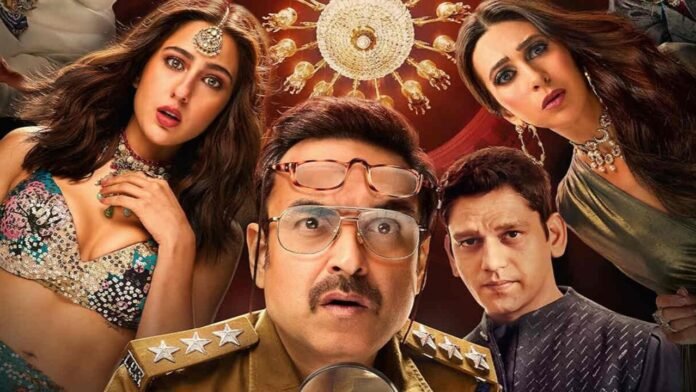Unraveling the Controversial Tapestry of Indian Cinema A Deep Dive into the Bastar Movie Phenomenon and Murder Mubarak.
3 min read 2024-03-16, 12:00 AM IST
Summary
|
In the vast landscape of Indian cinema, every now and then, a film emerges that not only ignites debates but also polarizes audiences with its thematic choices and narrative portrayal. Such is the case with the enigmatic “Bastar Movie,” a cinematic endeavor that has stirred a maelstrom of opinions and controversies across the cultural spectrum of India. From accusations of political bias to allegations of glorifying violence, the discourse surrounding this film transcends mere cinematic critique, delving into the realms of ideology, nationalism, and socio-political unrest.
Movies Review
At its core, the Bastar Movie epitomizes a genre that has become increasingly prevalent in contemporary Indian cinema – one that delves into the socio-political fabric of the nation, often drawing inspiration from real-life events and historical narratives. This genre, exemplified by films like “The Kashmir Files,” carries a weighty burden of responsibility, as it navigates the delicate balance between storytelling and socio-political commentary.
Central to the controversies surrounding the Bastar Movie is the dichotomy of perspectives it presents. On one hand, fervent supporters hail it as a testament to nationalism, praising its unapologetic portrayal of anti-terrorist sentiments and valorizing the sacrifices made by security forces in conflict-ridden regions like Bastar. For them, the film serves as a poignant reminder of the perils faced by those on the frontlines of the battle against insurgency and terrorism.
Conversely, detractors of the Bastar Movie accuse it of perpetuating a jingoistic narrative, one that demonizes certain ideological factions while conveniently sidestepping the complexities of the socio-political landscape. They argue that the film’s unabashed portrayal of violence and its reductionist approach to character motivations not only oversimplify the conflict but also risk exacerbating existing tensions within Indian society.
Embedded within the discourse surrounding the Bastar Movie is a larger question of artistic responsibility and ethical storytelling. As audiences grapple with the ethical implications of consuming such narratives, filmmakers are faced with the daunting task of balancing creative expression with social consciousness. In an age where cinema holds immense power to shape public perception and influence political discourse, the stakes have never been higher.
Critics of the Bastar Movie point to its portrayal of violence, particularly against children, as a prime example of the ethical dilemmas inherent in such cinematic endeavors. By sensationalizing acts of brutality without providing adequate context or depth to the perpetrators’ motivations, the film risks trivializing the very real suffering experienced by those caught in the crossfire of conflict.
Moreover, the Bastar Movie’s treatment of its characters has come under scrutiny, with critics lamenting the lack of nuance and depth afforded to its ensemble cast. While performances by the likes of Pankaj Tripathi, Sanjay Kapoor, Vijay Verma, and Dimple Kapadia are lauded for their intensity and conviction, the film’s disjointed narrative structure undermines their efforts, leaving viewers disconnected from the emotional core of the story.
In dissecting the Bastar Movie, one cannot overlook its thematic underpinnings and socio-political implications. By framing the narrative within the context of contemporary Indian politics, the film inevitably becomes entangled in the web of ideological discord that defines the nation’s socio-political landscape. For some, it serves as a rallying cry for nationalist sentiment, while for others, it symbolizes the dangers of political polarization and the weaponization of cinema for propagandistic ends.
As audiences grapple with the moral ambiguity of the Bastar Movie, one thing remains clear – its impact transcends the confines of the silver screen, permeating into the very fabric of Indian society. Whether viewed as a cautionary tale or a triumph of cinematic expression, the film’s legacy will undoubtedly endure, sparking conversations and debates for years to come.
In the final analysis, the Bastar Movie serves as a poignant reminder of cinema’s power to provoke, inspire, and incite change. It challenges viewers to confront uncomfortable truths and grapple with the complexities of the human condition, even as it navigates the treacherous waters of political controversy. Love it or loathe it, the Bastar Movie demands to be seen, heard, and reckoned with – a testament to the enduring allure of Indian cinema and its capacity to reflect the multifaceted tapestry of the human experience.
As the credits roll on the Bastar Movie, the curtain falls on a chapter in Indian cinema’s storied history – but the conversation it has sparked will continue to reverberate, echoing through the corridors of power, the streets of Bastar, and the hearts of audiences across the nation.

